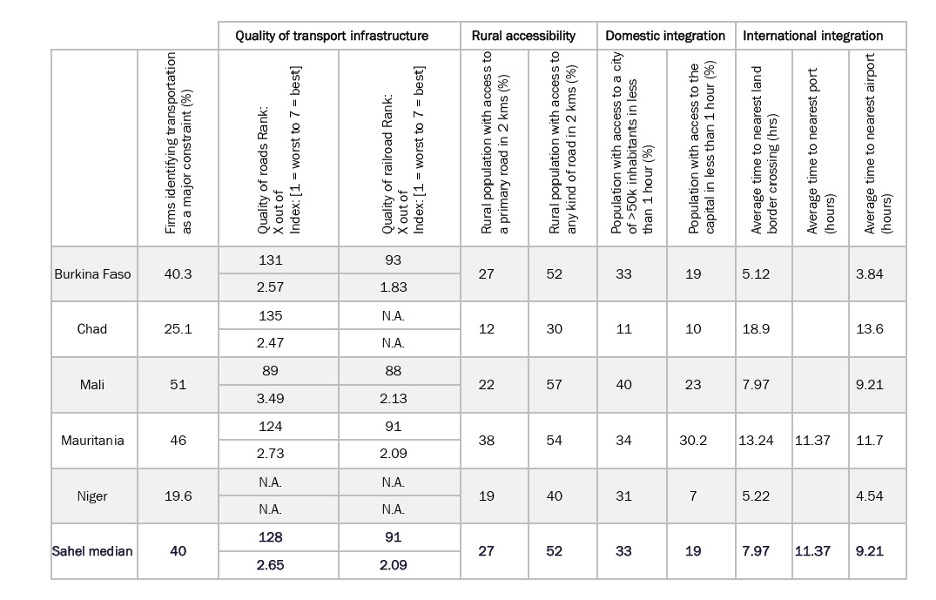In this context of land degradation in the Sahel, several key challenges and opportunities exist that underscore the importance and potential effectiveness of the landscape approach.
Challenges
The Sahel region faces a cluster of interconnected challenges in agriculture, violent conflicts and weak governance, population growth which undermine the development and stability of the region. The interconnectedness of these challenges and their consequences underscores the importance of a landscape approach to identify and implement solutions. It is difficult to manage these challenges due to access to reliable data and efficient monitoring infrastructure: for example, countries have limited capacity to handle critical agro-meteorological data for early warning systems. This is particularly important when the region is highly vulnerable to the effects of climate change: rising temperatures and erratic rainfall – droughts and floods are growing more frequent and intense, devastating agriculture and worsening food insecurity.
Climate change is expected to have significant economic repercussions for the Sahelian countries: loss of GDP, lower agricultural yields, reduced labour productivity, as well as damage to infrastructure caused by flooding.
The Cadre Harmonisé analysis of December 2024 projects 52.7 million West Africans will face acute hunger during the 2025 lean season, including 3.4 million people in Emergency (Phase 4) across the Sahel and about 2,600 in Catastrophe (Phase 5) in Mali.
At the country level, Chad’s influx of refugees from Sudan has placed enormous pressure on resources that are already limited. This has increased tension and competition between communities, leading to congested sites around the border with Sudan. This is of particular concern as Chad is entering the sixth consecutive year of severe food insecurity in the year 2025, during the lean season from June-August 4.2million people are projected to be affected, which is an increase of more than 200% since 2020.
Pollution is a challenge in urban and rural areas. In rural zones, overuse of pesticides and mercury from artisanal gold mining (notably in Mali) pose long-term threats to soil and water quality.
Transportation infrastructure in the Sahel also poses several challenges that contribute to land degradation. Unpaved and poorly maintained roads lead to soil compaction, reduced water infiltration, and increased surface runoff, which intensifies soil erosion and the loss of fertile topsoil (Mulualem & Tesfahunegn, 2015) . In many cases, the lack of environmental safeguards in transport development increases ecosystem vulnerability and accelerates desertification across the region.

Key Transport Sector Indicators Source: World Bank
Without urgent and coordinated responses, these challenges will continue to undermine the Sahel’s alignment with international climate and development targets, including SDG 13 (Climate Action) and the African Great Green Wall Initiative.
Opportunities
While the challenges to sustainable development in the Sahel are significant, opportunities exist that if leveraged can help address these challenges and build resilience across the region.
One huge opportunity the region has is that global good practices around integrated landscape approaches have been piloted, scaled, and refined in numerous other regions across the globe. These existing and evolving efforts have leveraged ever-increasing datasets and the emerging and innovative technologies that help us to process these data and develop operational insights from them.
Another significant opportunity in the Sahel region is their youth – over 240 million of the region’s people are under the age of 24 (UNICEF). These youth are eager to improve their environment and build resilience for their livelihoods. The videos below capture this energy through UNICEF’s Youth Voices for Sahel effort.
In addition, Sahel’s extensive solar energy potential offers a complementary pathway to land restoration. Solar energy helps protect forest cover and regeneration of landscapes: By reducing dependence on wood-based fuels—one of the primary drivers of deforestation. It also powers climate-smart solutions like solar irrigation, off-grid agro-processing, and clean energy for rural communities, all of which enable restoration-compatible livelihoods. Investments in decentralized solar systems can thus help restore degraded ecosystems while creating green jobs and improving energy access.
Finally, heightened international interest in climate adaptation and land restoration—exemplified by the Great Green Wall Accelerator and increasing climate finance flows, the Sahel is well positioned to mobilize technical and financial resources. With strong coordination, inclusive planning, and youth engagement, the region can transform these opportunities into pathways for environmental stability, economic recovery, and social cohesion.